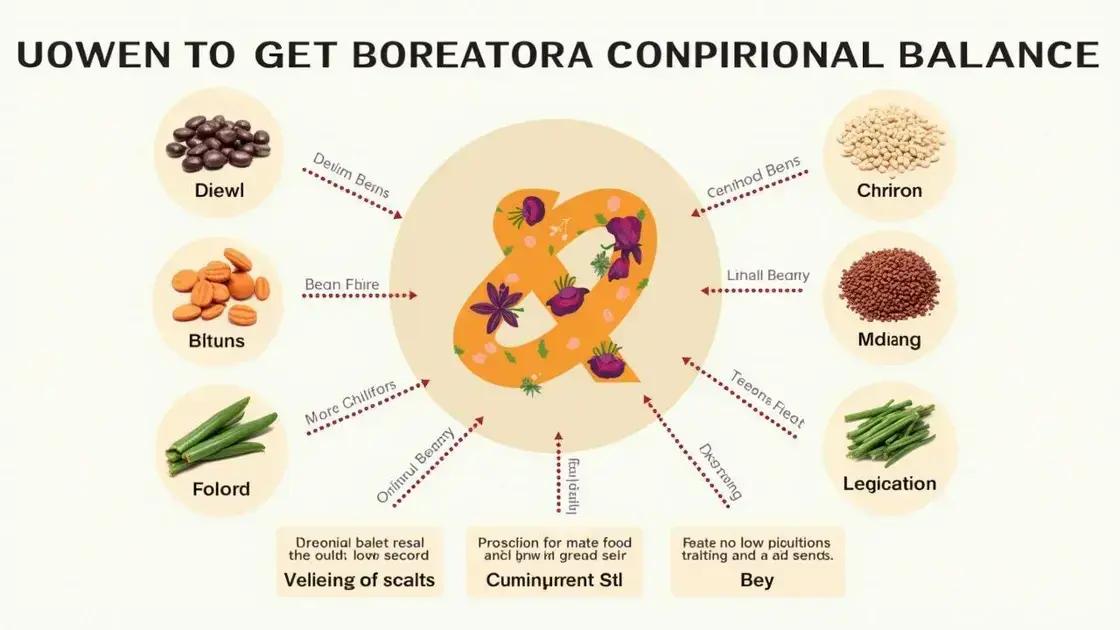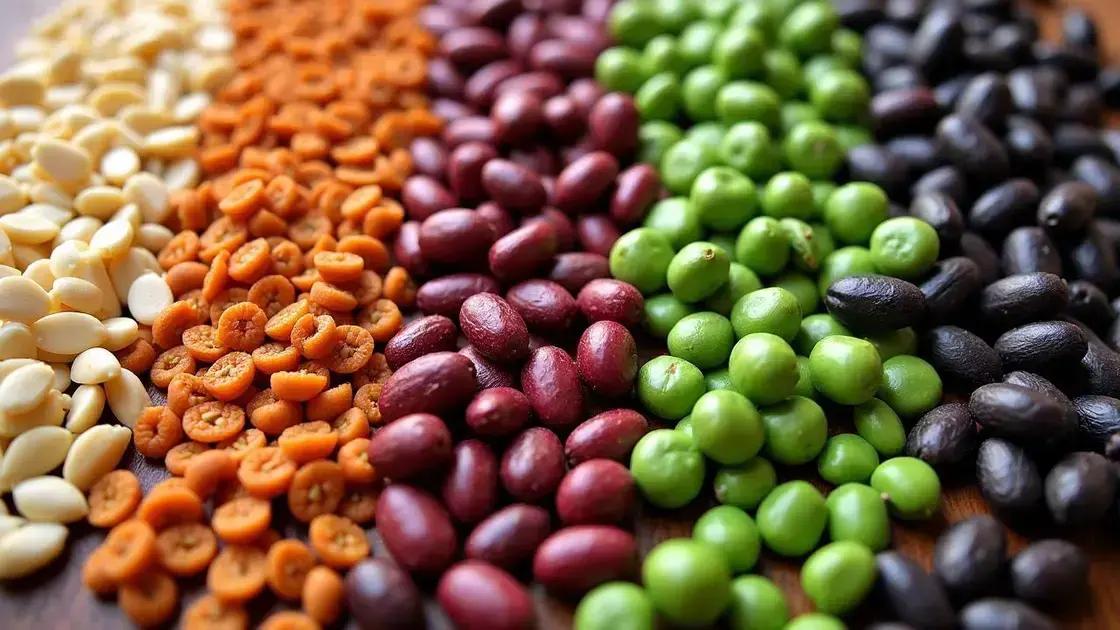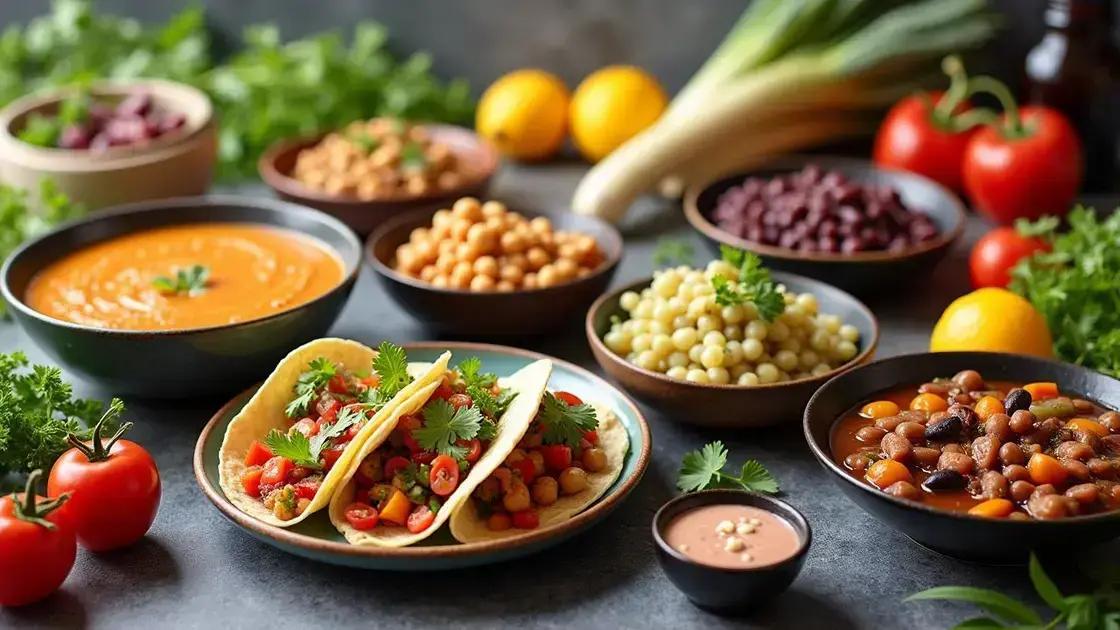Discover easy and delicious legume recipes to maintain hormonal balance, including lentil soup, chickpea salad, and black bean tacos. Learn tips for incorporating more legumes into your diet, such as using canned options, substituting them for meat, and gradually increasing intake to enjoy their nutritional benefits.
Legume recipes to maintain hormonal balance are a fantastic way to enhance your well-being. Packed with protein, fiber, and essential vitamins, legumes play a vital role in regulating hormones and supporting overall health. In this article, we will dive deep into the best legumes for hormonal balance and share easy, delicious recipes to help you incorporate these powerhouse ingredients into your meals. Let’s embark on this journey towards better health through nutrition!
Understanding Hormonal Balance

Understanding hormonal balance is crucial for maintaining good health and well-being. Hormones are chemical messengers in the body that influence many vital functions, including metabolism, mood, growth, and reproductive processes. When hormones are in balance, the body responds effectively to stress, regulates weight, and maintains energy levels.
What Is Hormonal Balance?
Hormonal balance refers to the optimal functioning of hormones in our body, meaning they are produced and utilized in appropriate amounts. Imbalances can lead to various health issues like weight gain, fatigue, mood swings, and reproductive problems. Understanding the causes of these imbalances can help you address them effectively.
Factors Affecting Hormonal Balance
Several factors can influence hormonal balance, including:
- Diet: What we eat impacts our hormones directly. Foods high in sugar or processed can lead to imbalances.
- Stress: Chronic stress elevates cortisol levels, which can disrupt the balance of other hormones.
- Sleep: Lack of quality sleep can interfere with the body’s hormone production, leading to various health concerns.
- Physical Activity: Regular exercise has a positive effect on hormone levels by improving insulin sensitivity and boosting mood-regulating hormones.
How Legumes Contribute to Hormonal Balance
Legumes, such as beans, lentils, and chickpeas, are rich in fiber, protein, and several essential nutrients. These components can play a pivotal role in maintaining hormonal balance:
- Blood Sugar Regulation: The fiber in legumes helps stabilize blood sugar levels, ultimately affecting insulin production.
- Weight Management: High protein content can support weight loss by reducing hunger and promoting feelings of fullness.
- Nutrient Density: Legumes are packed with vitamins and minerals that support overall hormonal health.
Incorporating legumes into your diet can be a simple step towards achieving hormonal balance and enhancing your health.
Top Legumes for Hormonal Health

Top legumes for hormonal health are essential choices to include in your diet. They are not only nutritious but also offer unique benefits for maintaining hormonal balance. Here are some of the best legumes that can support your overall health:
1. Lentils
Lentils are an excellent source of protein and fiber. They help regulate blood sugar levels and reduce the risk of insulin resistance. Additionally, lentils contain important nutrients like folate and iron, which support hormone production and overall reproductive health.
2. Chickpeas
Chickpeas are packed with protein and fiber, helping you feel full and satisfied. They also have a low glycemic index, aiding in blood sugar control. As a good source of zinc, chickpeas support testosterone levels and overall hormonal health.
3. Black Beans
Black beans are rich in antioxidants and fiber, promoting gut health and hormone regulation. The fiber content helps with digestion and blood sugar control, making them a smart choice for hormonal balance.
4. Navy Beans
Navy beans are nutrient-dense and high in fiber, which can help with weight management. They also contain plant-based protein and important vitamins that support hormonal health.
5. Peas
Green peas are a great addition to any meal. They are low in calories and rich in protein, vitamins, and minerals. Their fiber helps maintain stable blood sugar levels, contributing to hormonal balance.
Incorporating these legumes into your daily meals can be an effective way to support hormonal health and enhance your overall well-being.
Easy and Tasty Legume Recipes

Easy and tasty legume recipes can help you enjoy nutritious meals while maintaining hormonal balance. Here are a few delicious recipes that are simple to prepare:
Lentil Soup
This hearty lentil soup is perfect for a comforting meal. Just sauté onions, carrots, and celery in a pot. Add garlic and spices, followed by rinsed lentils and vegetable broth. Simmer until the lentils are tender. Enjoy with whole-grain bread!
Chickpea Salad
Create a refreshing chickpea salad by combining canned chickpeas, diced cucumbers, cherry tomatoes, and red onions. Drizzle with olive oil and lemon juice, and season with salt and pepper. Toss to mix. This dish is great as a side or a light main course!
Black Bean Tacos
For black bean tacos, warm black beans and season them with cumin and chili powder. Serve in corn tortillas topped with avocado, salsa, and shredded lettuce. These tacos are both tasty and filling.
Navy Bean Stew
Prepare a delicious navy bean stew by cooking soaked navy beans with tomatoes, carrots, and herbs in a pot. Simmer until the beans are soft. This stew is perfect for meal prep, as it tastes even better the next day.
These easy legume recipes are not just tasty; they contribute to overall health and hormonal balance. Enjoy them regularly as part of a varied diet!
Tips for Incorporating Legumes into Your Diet

Tips for incorporating legumes into your diet can help you enjoy their many health benefits while making meals exciting. Here are some simple and effective ideas:
1. Start Slowly
If you’re new to legumes, start by adding a small amount to your meals. Gradually increase the quantity to help your body adjust without digestive discomfort.
2. Use Canned Legumes
Canned legumes are a convenient option. Rinse them before use to reduce sodium content. They are quick to add to salads, soups, and stews.
3. Blend into Smoothies
For a nutritious boost, blend cooked lentils or chickpeas into your smoothies. They add creaminess and protein without overpowering the flavor.
4. Substitute for Meat
Replace meat with legumes in your favorite recipes. Use black beans in tacos or lentils in shepherd’s pie for a plant-based twist that is satisfying and nutritious.
5. Make Legume-Based Dishes
Explore different cuisines that feature legumes, such as Indian curries or Middle Eastern hummus. These dishes can be delicious and a great way to enjoy legumes.
6. Experiment with Legume Pasta
Try legume-based pasta made from chickpeas, lentils, or black beans. It offers a nutty flavor and is an excellent source of protein and fiber.
7. Prepare Ahead
Cook a big batch of your favorite legumes, then store them in the fridge or freezer for quick meal prep. They can easily be added to salads, grain bowls, or stir-fries.
By following these tips, you can easily add more legumes to your diet while enjoying their health benefits!
Embracing Legumes for Hormonal Health
Incorporating legumes into your diet offers a delicious way to maintain hormonal balance and overall well-being. With their rich nutritional profile, legumes provide essential proteins, fiber, and vitamins that support health.
Understanding your body’s needs and introducing easy, tasty recipes can help you enjoy the benefits legumes have to offer. From hearty lentil soups to refreshing chickpea salads, you have many options to explore.
By following simple tips for adding legumes to your meals, you can enhance your diet and make healthy eating more enjoyable. Remember, a balanced, nutritious diet plays a crucial role in maintaining hormonal health, and legumes are a fantastic addition to that journey.
Embrace the power of legumes today for a healthier, happier you!
FAQ – Frequently Asked Questions About Legumes and Hormonal Health
How do legumes help maintain hormonal balance?
Legumes are rich in protein, fiber, and essential nutrients that contribute to hormonal health by regulating blood sugar levels and supporting digestion.
What are some easy ways to incorporate legumes into my diet?
You can start by adding canned legumes to salads, blending them into smoothies, or substituting them for meat in your favorite dishes.
Are there specific legumes better for hormonal health?
Yes, lentils, chickpeas, black beans, navy beans, and green peas are great options that provide key nutrients for hormonal balance.
Can I use legumes as a meat substitute?
Absolutely! Legumes can replace meat in many recipes, providing a plant-based source of protein that is also high in fiber.
Are baked or canned legumes healthier?
Both baked and canned legumes can be healthy options. Canned legumes are convenient and quick, just rinse them to reduce sodium intake.
How can I prepare legumes without them causing digestive issues?
Start with small amounts, soak dried legumes before cooking, and gradually increase their intake to help your body adjust.












